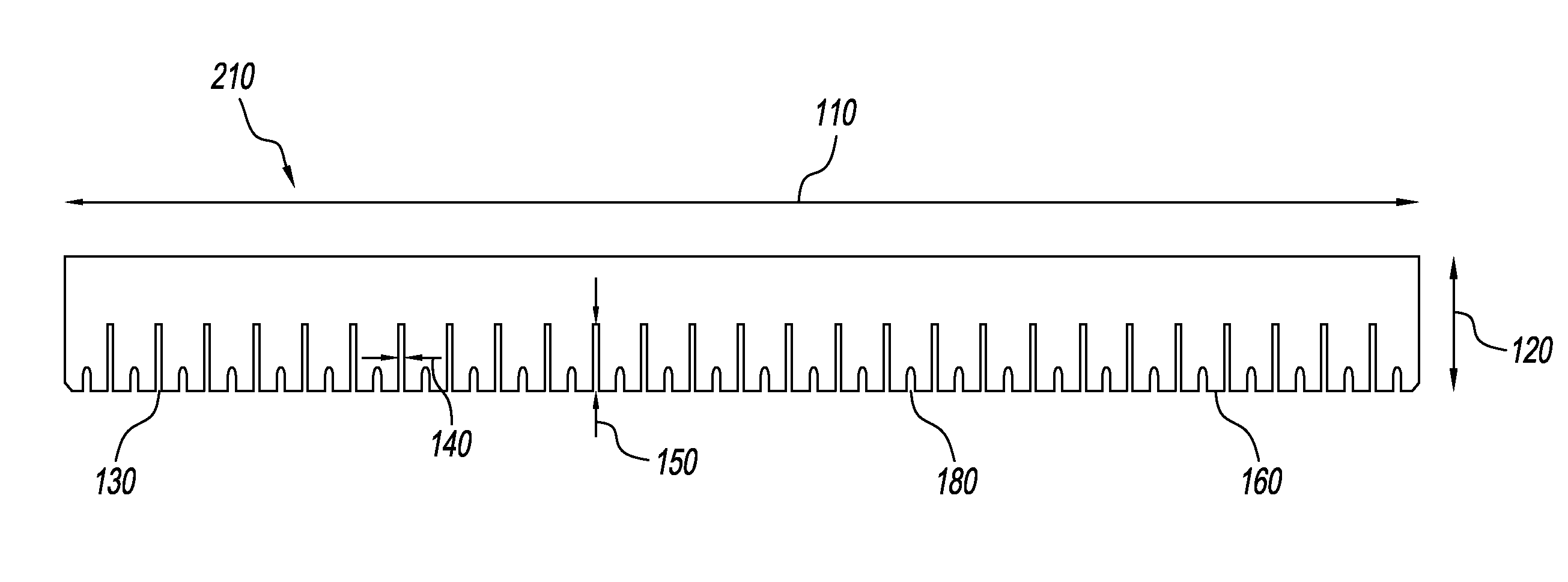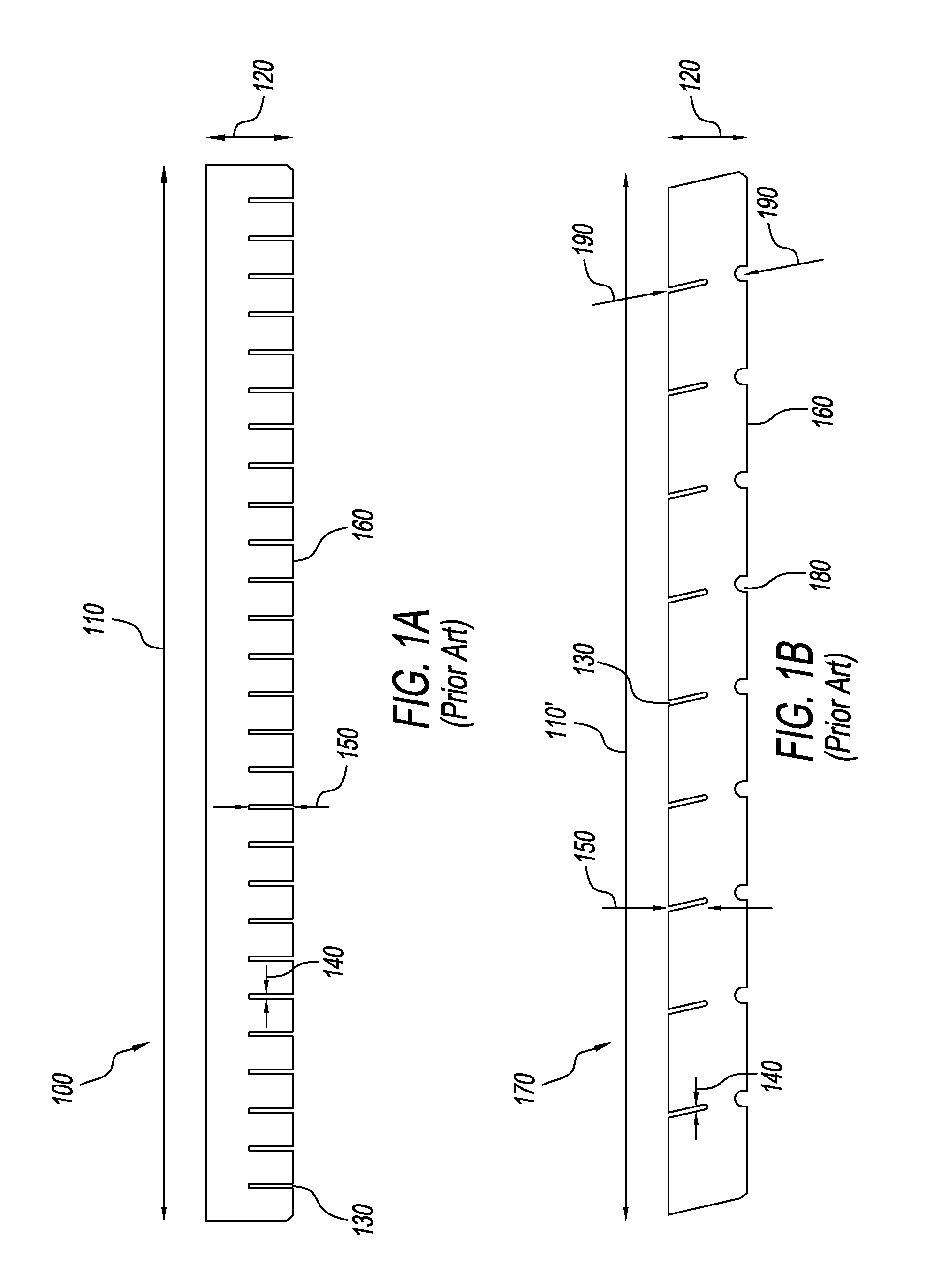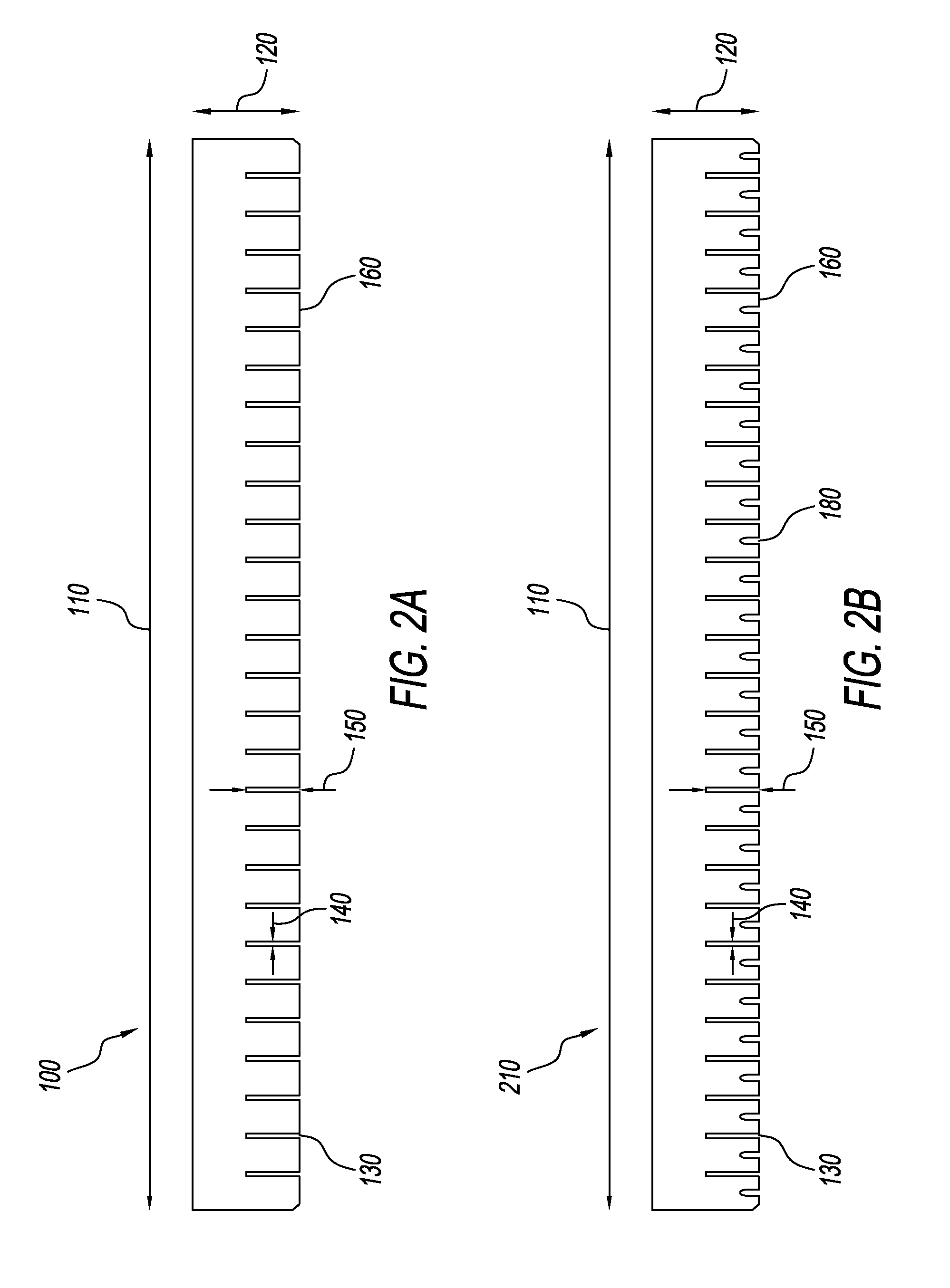Ice making machine evaporator with joined partition intersections
- Summary
- Abstract
- Description
- Claims
- Application Information
AI Technical Summary
Benefits of technology
Problems solved by technology
Method used
Image
Examples
Embodiment Construction
[0033]FIG. 1A shows a side view of a conventional horizontal partition 100. Conventional horizontal partition 100 has a length 110 and a height 120. Conventional horizontal partition 100 has a plurality of substantially equally spaced slots 130, each slot having a width 140 and a depth 150. Length 110 is approximately equal to the inside horizontal surface of a vertically disposed evaporator pan (not shown) to which it is affixed. Height 120 is approximately equal to the depth of a vertically disposed evaporator pan (not shown) to which it is affixed. Slots 130 are substantially equally spaced so as to provide substantially equally sized cells (when mated or joined with a vertical partition) for the formation of ice cubes. Slots 130 are also provided with a depth 150 that is, generally, approximately half the height 120 of horizontal partition 100 and vertical partition 170 (see, FIG. 1B) so that, when inserted into matching slot 130 in vertical partition 170 lower edge 160 of horiz...
PUM
| Property | Measurement | Unit |
|---|---|---|
| Width | aaaaa | aaaaa |
Abstract
Description
Claims
Application Information
 Login to View More
Login to View More - R&D
- Intellectual Property
- Life Sciences
- Materials
- Tech Scout
- Unparalleled Data Quality
- Higher Quality Content
- 60% Fewer Hallucinations
Browse by: Latest US Patents, China's latest patents, Technical Efficacy Thesaurus, Application Domain, Technology Topic, Popular Technical Reports.
© 2025 PatSnap. All rights reserved.Legal|Privacy policy|Modern Slavery Act Transparency Statement|Sitemap|About US| Contact US: help@patsnap.com



